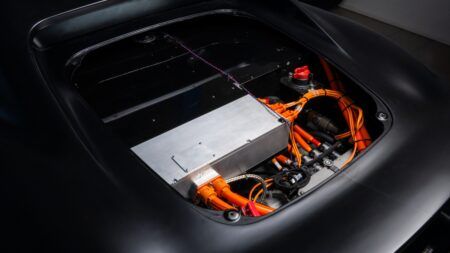Comau, a Stellantis company, will be developing an energy efficient cell formation chamber as part of its work with Gigabat, a pan-European initiative aimed at supporting the sustainable and ecological transition towards e-Mobility. Gigabat seeks to consolidate a large-scale European battery cell manufacturing value chain, with Comau and the other consortium members. Within the scope of the project, Comau’s battery cell formation technology is expected to deliver an electric and thermal energy savings of up to 20% compared to similar solutions available on the market thanks to the recovery and reuse of excess heat and electricity produced during the intense, multi-day cell activation procedure.
As part of the Gigabat project, the Comau’s high-performance cell formation chamber will be designed to optimize the recuperation and reuse of electric energy and heat while delivering a compact chamber layout and warehouse management strategy compared to alternative solutions. To do so, the company will leverage innovative power distribution systems and energy-efficient power electronics (PE) to avoid energy losses while reducing overall energy demand. Comau will also rely on its proprietary algorithms and powerful digital enablers to further optimize the lengthy and highly complex cell formation process.
“Europe is moving towards an increasingly self-contained battery production chain and energy-efficient cell manufacturing is key to achieving this goal,” said Pietro Gorlier, CEO, Comau. “E-Mobility already represents a relevant and fast-growing part of Comau’s business portfolio. Initiatives such as Gigabat, which go hand-in-hand with our technology development strategy and our ongoing dedication to enabling and optimizing sustainable automation, will allow us to increasingly cover all phases of the electrification life cycle achieving up to 20% electric and thermal energy savings.”
Led by Cidetec Energy Storage, Gigabat is bringing together European companies and suppliers that can help Europe achieve a leadership position in battery cell production while optimizing energy efficiency and resource utilization. In parallel, the project aims to promote collaboration between industrial-scale cell manufacturers, battery process equipment companies, material suppliers, and grid energy providers, all of whom will ensure that sustainability and efficiency standards are met every step of the way.





